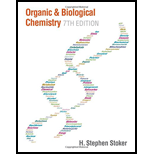
Organic And Biological Chemistry
7th Edition
ISBN: 9781305081079
Author: STOKER, H. Stephen (howard Stephen)
Publisher: Cengage Learning,
expand_more
expand_more
format_list_bulleted
Concept explainers
Textbook Question
Chapter 2, Problem 2.54EP
For each of the following molecules, indicate whether or not cis–trans isomerism is possible.
- a. 2-Pentene
- b. l-Chloro-2-pentene
- c. Chlorocyclopentane
- d. 1,2-Dichlorocyclopentane
Expert Solution & Answer
Trending nowThis is a popular solution!

Students have asked these similar questions
What kinds of reactions are common to alkanes? List an example of each.
What are structural isomers? What is thesmallest alkane that has a structural isomer?Draw structures to illustrate the isomers.
Chapter 2 Solutions
Organic And Biological Chemistry
Ch. 2.1 - Prob. 1QQCh. 2.1 - Prob. 2QQCh. 2.1 - Prob. 3QQCh. 2.2 - Prob. 1QQCh. 2.2 - Prob. 2QQCh. 2.2 - Prob. 3QQCh. 2.2 - Prob. 4QQCh. 2.3 - Prob. 1QQCh. 2.3 - Prob. 2QQCh. 2.3 - Prob. 3QQ
Ch. 2.3 - Prob. 4QQCh. 2.4 - Prob. 1QQCh. 2.4 - Prob. 2QQCh. 2.5 - Prob. 1QQCh. 2.5 - Prob. 2QQCh. 2.5 - Prob. 3QQCh. 2.6 - Prob. 1QQCh. 2.6 - Prob. 2QQCh. 2.6 - Prob. 3QQCh. 2.7 - Prob. 1QQCh. 2.7 - Prob. 2QQCh. 2.7 - Prob. 3QQCh. 2.8 - Prob. 1QQCh. 2.8 - Prob. 2QQCh. 2.9 - Prob. 1QQCh. 2.9 - Prob. 2QQCh. 2.10 - Prob. 1QQCh. 2.10 - Prob. 2QQCh. 2.10 - Prob. 3QQCh. 2.10 - Prob. 4QQCh. 2.10 - Prob. 5QQCh. 2.11 - Prob. 1QQCh. 2.11 - Prob. 2QQCh. 2.11 - Prob. 3QQCh. 2.11 - Prob. 4QQCh. 2.11 - Prob. 5QQCh. 2.12 - Prob. 1QQCh. 2.12 - Prob. 2QQCh. 2.12 - Prob. 3QQCh. 2.12 - Prob. 4QQCh. 2.12 - Prob. 5QQCh. 2.13 - Prob. 1QQCh. 2.13 - Prob. 2QQCh. 2.13 - Prob. 3QQCh. 2.14 - Prob. 1QQCh. 2.14 - Prob. 2QQCh. 2.14 - Prob. 3QQCh. 2.14 - Prob. 4QQCh. 2.15 - Prob. 1QQCh. 2.15 - Prob. 2QQCh. 2.15 - Prob. 3QQCh. 2.15 - Prob. 4QQCh. 2.16 - Prob. 1QQCh. 2.16 - Prob. 2QQCh. 2 - Classify each of the following hydrocarbons as...Ch. 2 - Prob. 2.2EPCh. 2 - Prob. 2.3EPCh. 2 - Prob. 2.4EPCh. 2 - Prob. 2.5EPCh. 2 - Prob. 2.6EPCh. 2 - Prob. 2.7EPCh. 2 - Characterize the physical properties of saturated...Ch. 2 - Prob. 2.9EPCh. 2 - Prob. 2.10EPCh. 2 - Prob. 2.11EPCh. 2 - Prob. 2.12EPCh. 2 - Prob. 2.13EPCh. 2 - Prob. 2.14EPCh. 2 - What is the name of the spatial arrangement for...Ch. 2 - Prob. 2.16EPCh. 2 - Prob. 2.17EPCh. 2 - Prob. 2.18EPCh. 2 - Draw a condensed structural formula for each of...Ch. 2 - Prob. 2.20EPCh. 2 - The following names are incorrect by IUPAC rules....Ch. 2 - The following names are incorrect by IUPAC rules....Ch. 2 - Prob. 2.23EPCh. 2 - Draw a condensed structural formula for each of...Ch. 2 - Prob. 2.25EPCh. 2 - Classify each of the following compounds as...Ch. 2 - Prob. 2.27EPCh. 2 - How many hydrogen atoms are present in a molecule...Ch. 2 - Draw a line-angle structural formula for each of...Ch. 2 - Draw a line-angle structural formula for each of...Ch. 2 - Prob. 2.31EPCh. 2 - Prob. 2.32EPCh. 2 - Prob. 2.33EPCh. 2 - Prob. 2.34EPCh. 2 - Prob. 2.35EPCh. 2 - Prob. 2.36EPCh. 2 - Prob. 2.37EPCh. 2 - Prob. 2.38EPCh. 2 - For each of the following pairs of alkenes,...Ch. 2 - For each of the following pairs of alkenes,...Ch. 2 - Prob. 2.41EPCh. 2 - Prob. 2.42EPCh. 2 - Prob. 2.43EPCh. 2 - Prob. 2.44EPCh. 2 - Prob. 2.45EPCh. 2 - Prob. 2.46EPCh. 2 - For each molecule, indicate whether cistrans...Ch. 2 - Prob. 2.48EPCh. 2 - Prob. 2.49EPCh. 2 - Prob. 2.50EPCh. 2 - Draw a structural formula for each of the...Ch. 2 - Prob. 2.52EPCh. 2 - Prob. 2.53EPCh. 2 - For each of the following molecules, indicate...Ch. 2 - Prob. 2.55EPCh. 2 - Prob. 2.56EPCh. 2 - Prob. 2.57EPCh. 2 - Prob. 2.58EPCh. 2 - Prob. 2.59EPCh. 2 - How many isoprene units are present in a....Ch. 2 - Prob. 2.61EPCh. 2 - Indicate whether each of the following statements...Ch. 2 - Prob. 2.63EPCh. 2 - Prob. 2.64EPCh. 2 - Prob. 2.65EPCh. 2 - Prob. 2.66EPCh. 2 - Prob. 2.67EPCh. 2 - Prob. 2.68EPCh. 2 - Prob. 2.69EPCh. 2 - Prob. 2.70EPCh. 2 - Prob. 2.71EPCh. 2 - Prob. 2.72EPCh. 2 - Prob. 2.73EPCh. 2 - Prob. 2.74EPCh. 2 - Prob. 2.75EPCh. 2 - Prob. 2.76EPCh. 2 - Supply the structural formula of the product in...Ch. 2 - Prob. 2.78EPCh. 2 - Prob. 2.79EPCh. 2 - What reactant would you use to prepare each of the...Ch. 2 - Prob. 2.81EPCh. 2 - Prob. 2.82EPCh. 2 - Prob. 2.83EPCh. 2 - Prob. 2.84EPCh. 2 - Prob. 2.85EPCh. 2 - Prob. 2.86EPCh. 2 - Prob. 2.87EPCh. 2 - Prob. 2.88EPCh. 2 - Prob. 2.89EPCh. 2 - Prob. 2.90EPCh. 2 - Prob. 2.91EPCh. 2 - Prob. 2.92EPCh. 2 - Prob. 2.93EPCh. 2 - Prob. 2.94EPCh. 2 - Prob. 2.95EPCh. 2 - Prob. 2.96EPCh. 2 - Prob. 2.97EPCh. 2 - Prob. 2.98EPCh. 2 - Prob. 2.99EPCh. 2 - Prob. 2.100EPCh. 2 - Prob. 2.101EPCh. 2 - Prob. 2.102EPCh. 2 - Prob. 2.103EPCh. 2 - Prob. 2.104EPCh. 2 - Prob. 2.105EPCh. 2 - Prob. 2.106EPCh. 2 - Prob. 2.107EPCh. 2 - Prob. 2.108EPCh. 2 - Assign each of the compounds in Problem 13-107 an...Ch. 2 - Assign each of the compounds in Problem 13-108 an...Ch. 2 - Prob. 2.111EPCh. 2 - Prob. 2.112EPCh. 2 - Prob. 2.113EPCh. 2 - Prob. 2.114EPCh. 2 - Prob. 2.115EPCh. 2 - Prob. 2.116EPCh. 2 - Prob. 2.117EPCh. 2 - Prob. 2.118EPCh. 2 - Prob. 2.119EPCh. 2 - Prob. 2.120EPCh. 2 - Prob. 2.121EPCh. 2 - Prob. 2.122EPCh. 2 - Prob. 2.123EPCh. 2 - Prob. 2.124EPCh. 2 - Prob. 2.125EPCh. 2 - Prob. 2.126EPCh. 2 - Prob. 2.127EPCh. 2 - Prob. 2.128EPCh. 2 - Prob. 2.129EPCh. 2 - Prob. 2.130EP
Knowledge Booster
Learn more about
Need a deep-dive on the concept behind this application? Look no further. Learn more about this topic, chemistry and related others by exploring similar questions and additional content below.Similar questions
- The compound CH2=CHCH2CH2CH3 is an example of: a. a pentane. b. a hexene. c. an alkene. d. organic macromolecule.arrow_forwardDraw the structural formula for each of the following. a. 3-isobutylhexane b. 2,2,4-trimethylpentane, also called isooctane. This substance is the reference (100 level) for octane ratings. c. 2-tert-butylpentane d. The names given in parts a and c are incorrect. Give the correct names for these hydrocarbons.arrow_forwardThe general formula of an alkane is CnH2n+2 . What is the general formula of an (a) alkene? (b) alkyne? (c) alcohol derived from an alkane?arrow_forward
Recommended textbooks for you
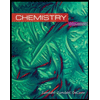 ChemistryChemistryISBN:9781305957404Author:Steven S. Zumdahl, Susan A. Zumdahl, Donald J. DeCostePublisher:Cengage Learning
ChemistryChemistryISBN:9781305957404Author:Steven S. Zumdahl, Susan A. Zumdahl, Donald J. DeCostePublisher:Cengage Learning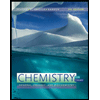 Chemistry for Today: General, Organic, and Bioche...ChemistryISBN:9781305960060Author:Spencer L. Seager, Michael R. Slabaugh, Maren S. HansenPublisher:Cengage Learning
Chemistry for Today: General, Organic, and Bioche...ChemistryISBN:9781305960060Author:Spencer L. Seager, Michael R. Slabaugh, Maren S. HansenPublisher:Cengage Learning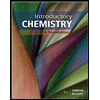 Introductory Chemistry: A FoundationChemistryISBN:9781337399425Author:Steven S. Zumdahl, Donald J. DeCostePublisher:Cengage Learning
Introductory Chemistry: A FoundationChemistryISBN:9781337399425Author:Steven S. Zumdahl, Donald J. DeCostePublisher:Cengage Learning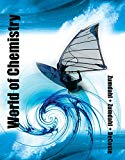 World of Chemistry, 3rd editionChemistryISBN:9781133109655Author:Steven S. Zumdahl, Susan L. Zumdahl, Donald J. DeCostePublisher:Brooks / Cole / Cengage Learning
World of Chemistry, 3rd editionChemistryISBN:9781133109655Author:Steven S. Zumdahl, Susan L. Zumdahl, Donald J. DeCostePublisher:Brooks / Cole / Cengage Learning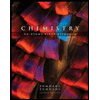 Chemistry: An Atoms First ApproachChemistryISBN:9781305079243Author:Steven S. Zumdahl, Susan A. ZumdahlPublisher:Cengage Learning
Chemistry: An Atoms First ApproachChemistryISBN:9781305079243Author:Steven S. Zumdahl, Susan A. ZumdahlPublisher:Cengage Learning

Chemistry
Chemistry
ISBN:9781305957404
Author:Steven S. Zumdahl, Susan A. Zumdahl, Donald J. DeCoste
Publisher:Cengage Learning

Chemistry for Today: General, Organic, and Bioche...
Chemistry
ISBN:9781305960060
Author:Spencer L. Seager, Michael R. Slabaugh, Maren S. Hansen
Publisher:Cengage Learning


Introductory Chemistry: A Foundation
Chemistry
ISBN:9781337399425
Author:Steven S. Zumdahl, Donald J. DeCoste
Publisher:Cengage Learning

World of Chemistry, 3rd edition
Chemistry
ISBN:9781133109655
Author:Steven S. Zumdahl, Susan L. Zumdahl, Donald J. DeCoste
Publisher:Brooks / Cole / Cengage Learning

Chemistry: An Atoms First Approach
Chemistry
ISBN:9781305079243
Author:Steven S. Zumdahl, Susan A. Zumdahl
Publisher:Cengage Learning
Chapter 4 Alkanes and Cycloalkanes Lesson 2; Author: Linda Hanson;https://www.youtube.com/watch?v=AL_CM_Btef4;License: Standard YouTube License, CC-BY
Chapter 4 Alkanes and Cycloalkanes Lesson 1; Author: Linda Hanson;https://www.youtube.com/watch?v=PPIa6EHJMJw;License: Standard Youtube License